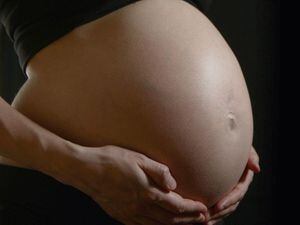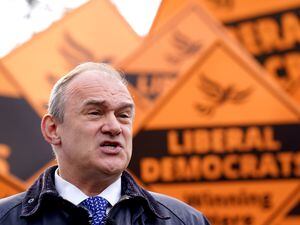Twin stillbirth rate reduced by almost half, study shows
Twins are more than one and a half times more likely to be stillborn than single babies.

A charity has welcomed news that the twin stillbirth rate has been reduced by almost half.
The Twins and Multiple Birth Association (Tamba) said it was the most rapid drop in stillbirths since records began.
Neonatal death rates in twins (where a baby dies within the first 28 days of life) have also fallen by a third, the figures show.
The report, carried out by experts from several universities in the UK, shows that between 2014 and 2016, 305 babies’ lives have been saved.
Twins are still more than one and a half times more likely to be stillborn and more than three times more likely to end with a neonatal death than single babies.
The ratio of mortality rates for stillbirths overall has remained fairly constant over time in terms of baby’s sex, ethnicity, gestational age and birth weight, however, there has been a statistically significant reduction in the rate of stillbirth in twins over the period from 11.07 to 6.16 per 1,000 total births.
Most neonatal mortality rates have also either remained static or showed a small reduction over the three years, but the reduction in neonatal mortality rates for twin pregnancies was statistically significant reducing from 7.81 to 5.34 per 1,000 live births.
Keith Reed, the charity’s chief executive, said: “This is a proud day for Tamba.
“In 2014, Tamba set a strategic plan that aimed to cut poor outcomes in multiple pregnancies. I’m delighted to see that the plan has achieved such a positive outcome.
“This appears to be the fastest recorded drop in stillbirths among any population on record.”
Dr Clea Harmer, chief executive of Sands, said: “It’s welcome news that the rate of baby deaths has fallen in the four years since MBRRACE-UK has been reporting.
“It’s particularly good to see an almost halving of twin stillbirths from 2014. It’s saddening, however, that today’s report shows there was little change in the rate and overall number of babies who died between 2015 and 2016. It’s still the case that almost 15 babies died every day in the UK either before, during or shortly after birth in 2016.
“Today’s report reminds us too that the wider societal picture is important. Poverty, inequality, ethnicity all increase a woman’s risk of losing her baby, as do smoking and obesity. This is MBRRACE-UK’s 4th annual report and, between the lines, it iterates once again that until we have a healthier, better informed, and more equal society, some women will remain at greater risk than others.”
A stillbirth is defined as a baby delivered at or after 24 weeks showing no signs of life, irrespective of when the death occurred.
The report was carried out by carried out by Mothers and Babies: Reducing Risk through Audits and Confidential Enquiries across the UK (MBRRACE-UK), a collaboration led from the National Perinatal Epidemiology Unit at the University of Oxford with members from the University of Leicester, University of Liverpool, University of Birmingham, Bradford Institute for Health Research, the stillbirth and neonatal death charity Sands, and a GP from Oxford.
Minister for mental health and inequalities, Jackie Doyle-Price, said: “There is nothing more devastating than losing a child, so it is encouraging to see the rate of stillbirths in twins has nearly halved.
“This is positive progress towards our national maternity ambition to halve the rates of stillbirth, neonatal deaths and maternal deaths in the NHS by 2025.
“We want the NHS to be the safest place in the world to give birth. We’ve invested millions of pounds in training for staff and new safety equipment, as well as recently announcing the largest ever increase in midwifery training places to ensure the NHS can provide world-class care for mothers and babies.”





